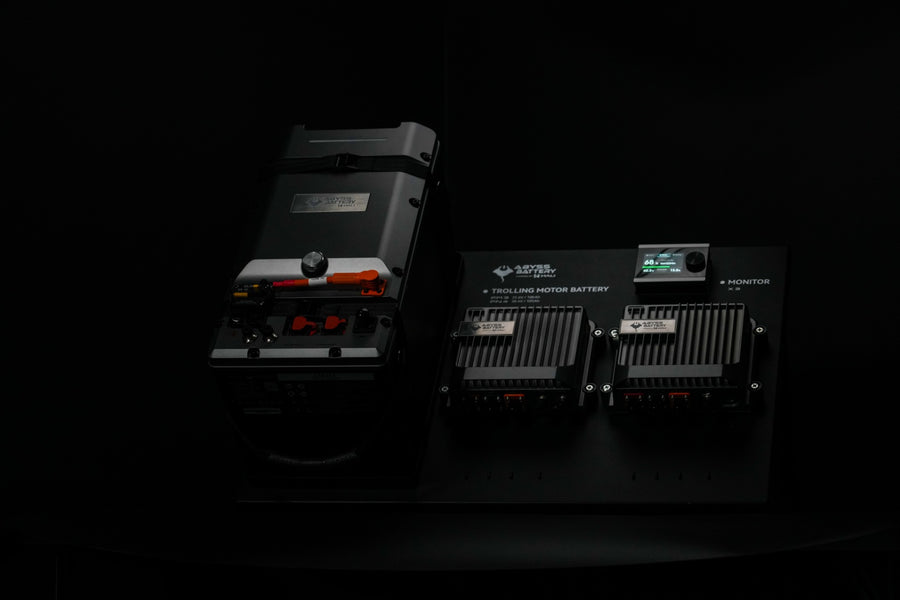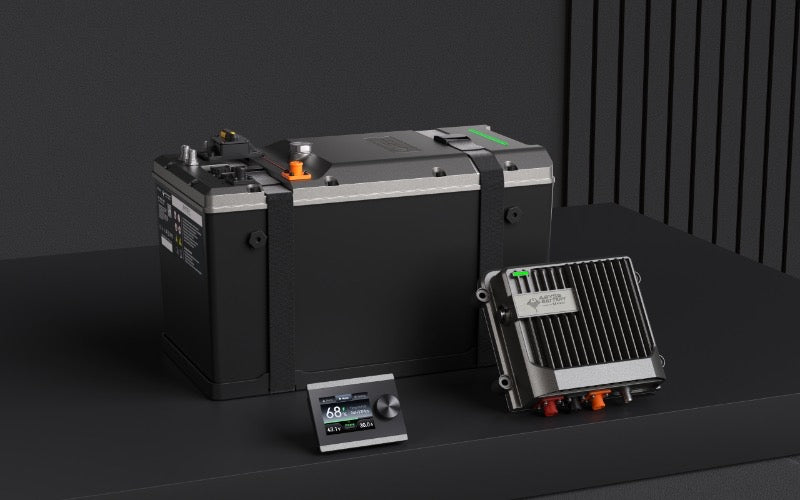Cranking Battery vs. Deep-Cycle Marine Battery

If you’re an avid boater, you know the importance of having the correct battery for the job. Starting your motor and moving on the water requires different amounts of amperage, making it essential to use a cell designed to handle the load.
When looking at a cranking battery vs. deep-cycle marine battery, you should clearly understand the difference between the two.
Review Power Output
One of the most significant differences between cranking and deep-cycle batteries is how much power they can put out. Cranking batteries have to put out a large amount of energy in shorter bursts to ensure they don’t lose their charge.
Cranking batteries are built to give boat owners a reliable power supply for starting their motor. This discrepancy means they need to have a higher amperage than deep-cycle batteries. On the other hand, deep-cycle batteries are intended to operate for extended periods, so they use less amperage overall.
Consider Charging Capacity
Deep-cycle batteries are designed to handle a higher load capacity than cranking batteries. Since they’re constructed with larger plates, they can be discharged and recharged more without causing the cell to break down. Cranking batteries, on the other hand, aren’t meant to be fully discharged.
Charging your battery correctly is essential if you want it to be reliable while on the water. Purchasing a marine lithium battery charger will ensure your batteries stay at maximum capacity without causing unnecessary wear and tear.
Discharge Cycles
Another big difference between deep-cycle and starter marine batteries is the number of cycles they’re designed for. While deep-cycle batteries can be charged and discharged thousands of times, you’ll only get a few dozen cycles out of a starter battery.
A marine battery can last up to six years if cared for properly. However, knowing how to maintain your cells to maximize their lifespan is essential. Store them in a dry, cool space out of the way. Don’t leave them on the charger. Otherwise, you could damage them prematurely.
Use the Right Battery for Your Boat
Marine batteries are designed to accommodate different cell types to meet your needs. Whether you want a traditional lead-acid, lithium-ion, or wet-cell battery, you must learn to take care of it so that you aren’t stranded on the water.
When comparing cranking battery vs. deep-cycle marine battery, it’s evident they’re used for distinct purposes. A clear idea of what each is for will ensure you get the most out of your investment.





I am about to purchase Lowrance prox2 plus two active target 2×2 my boat is a 1996 trollmotor 24 v so please tell me the best solution also I plan to run marine wire for each separate part. Thanks
Dear,
I am reaching out to you to recommend the real Dual Popurse Cranking&Deep cycle lithium Battery with most advanced BMS technology,
Dual Popurse, Cranking&Deep cycle application
Dual Terminal, SAE&M8 Bolt&Nuts
Output up to 2200 Cranking Amps depending on the product.
Super high reserve capacity, up to 165Ah Capacity, and 2000A Cranking Amps in Group 31 casing.
Well-suited for under-bonnet and engine room applications
Lightweight LiFePO4 chemistry
Smart BMS build-in
Bluetoorth monitoring
IP67 waterproof
let’s connect soon so I can explain more details over the phone or email as well as provide some samples if needed.
Regards
Vincent
JYD TECHNOLOGY CO.,LTD
https://www.leadmaxbattery.com/
Patented products are not posted on the Internet, Please contact by email vincent(dot)leadmaxbattery(dot)com to send specifications, quotations and other more information.
My uncle bought an aircraft to use for monitoring his hectares of land from now on, so he was thinking of getting new batteries for it soon. I appreciate you letting us know that deep-cycle batteries are designed for higher load capacities compared to cranking batteries since they are constructed with larger plates, so they can be discharged and recharged more without causing the cell to break down. I’ll keep this in mind while I look for an industrial equipment supplier in the area to contact about the deep-cycle batteries my uncle needs for his aircraft soon. https://concordebattery.com/about/lightweight-agm-battery-from-concorde-battery-corporation.html
Leave a comment